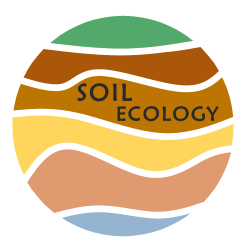Hydroclimatic controls on the transport of dissolved and particulate organic matter and trace metals in mountainous forested watersheds
TERRECO WP 2-02
Von 03/2009 bis 12/2013Projektleiter: Ji-Hyung Park, Egbert Matzner
Mitarbeiter: Hyunju Lee
Bewilligung: IRTG 1565 WP II TERRECO - Complex Terrain and Ecological Heterogeneity - Evaluating ecosystem services in production versus water yield and water quality in mountainous landscapes
Backgrounds & Objectives of the Project
Dynamics of dissolved organic matter (DOM) and particulate organic matter (POM) in soils and surface waters have been a key research topic in watershed biogeochemical research over the last couple of decades, due to their significance for both ecosystem functioning and environmental implications. Considering the importance of forested watersheds as a source of drinking water in Korea and Germany, a solid understanding of hydrologic controls on the co-transport of organic matter and toxic trace metals in mountainous forested watersheds is essential in predicting ‘climate risks’ imposed on surface water quality, especially in a world of increasing climatic extremities. The two primary goals of the proposed project are (1) to compare the response of the land-water transport of DOM and POM to extreme hydrologic events such as heavy rainfalls during the summer monsoon in Korea; and (2) to quantify climate risks associated with the quality of source water from different types of forested watersheds in Korea and Germany, based on the potential of DOM vs. POM for interacting with toxic trace metals.
State of Knowledge
DOM and POM represent the primary transport of organic carbon from land to water and the hydrologic transport of DOM alone is comparable to the amount of carbon sequestered in forest soils (Cole and Caraco, 2001). DOM in aquatic ecosystems of mostly terrestrial origin has highly reactive functional groups within dissolved humic and fulvic components that can build complexes with metals and sorb organic pollutants (Leenheer and Croué, 2003). Determining major controls on the biogeochemistry of DOM in upland systems and characterizing the properties of DOM derived from different sources are thus essential not only in understanding the ecological role of DOM in aquatic systems but also in predicting the fate of hazardous contaminants. Although hydrologic control on the movement of DOM in forested watersheds has been a central topic in watershed biogeochemical research (e.g., McDowell and Likens, 1988; Hornberger et al., 1994), little is yet known about the response of hydrologic DOM transport to extreme climatic events such as heavy rainfalls and floods. DOM reactivity with metals has also rarely been explored in relation to climatic variability and extremities. Some recent studies have linked drastic changes in hydrologic conditions during droughts or snowmelt events with changed interactions between DOM and trace metals in surface waters (Maurice et al., 2002; Park et al., 2005). In extreme climatic events such as the 2002 flood in the River Elbe, early peak concentrations of trace metals in surface waters concurred with those of fine suspended particulate matter, followed by gradual decreases in both DOC and dissolved metals concentrations, suggesting different repsonses of DOM and POM and their interactions with metals (Baborowski et al., 2004). Frequent heavy rainfalls during the East Asian summer monsoon provide a unique opportunity to study biogeochemical responses of DOM and POM to climate variability and extremity (Kim et al., 2000) and their implications for the quality of driking water from rugged headwater watersheds (Park et al., in press). Comparison of the biogeochemcial response of organic matter and trace metals to changing hydrology in different hydroclimatic regimes (Korea vs. Germany) will enhance our understanding of climate change impacts on an important ecosystem service, namely the clean water supply from forested watersheds.
Abstract: Increasing rainfall variability and extremes as a consequence of global climate change have been emerging as a major challenge for sound management of freshwater resources in steep mountainous watersheds in East Asia. To evaluate potential risks to stream water quality posed by rainfall variability and extremes, we investigated seasonal and storm-induced short-term changes of stream water quality in a mountainous mixed land-use watershed (the Haean Basin) in northern South Korea. We routinely monitored 10 stream locations every 2 – 4 weeks, combined with in-stream storm sampling at a headwater forest stream and a watershed outlet receiving agricultural runoff. Routine sampling results showed distinct spatial patterns for stream water quality, including increasing concentrations of TSS and dissolved nutrients toward downstream reaches of agricultural streams. TSS concentrations and UVA254 (as a measure of aromatic dissolved organic matter) intensities were generally higher during the summer monsoon period in all stream locations, while relatively high nutrient concentrations were observed in agricultural steams, particularly during extended drought periods. TSS concentrations in both the forest stream and watershed outlet rapidly increased upon initiation of storm events and reached unusually high levels during peak flow periods, suggesting that low-frequency routine stream sampling can not adequately capture rapid responses of suspended sediment export to storms. The results highlight the importance of extreme rainfall events for soil erosion and its impacts on stream water quality in steep mountainous watersheds. High dry-period nutrient concentrations in agricultural steams suggest that rapid expansion of agricultural lands in the Haean Basin over the recent decades can result in elevated risks of stream eutrophication during extended drought periods as well as the increased vulnerability of soil erosion on steep cultivated slopes.
Keywords: climate change, extreme events, Haean Basin, mountainous watersheds, soil erosion, water quality

